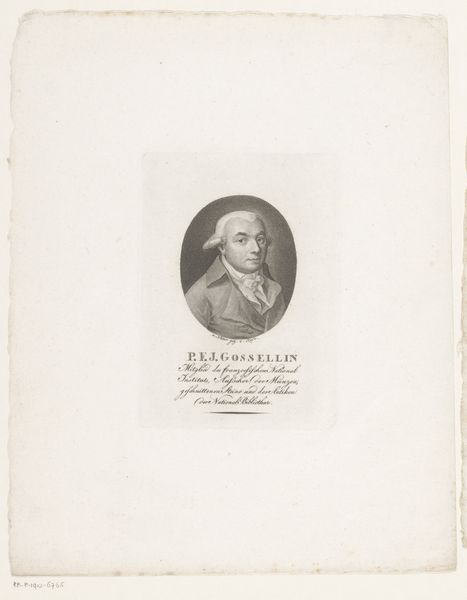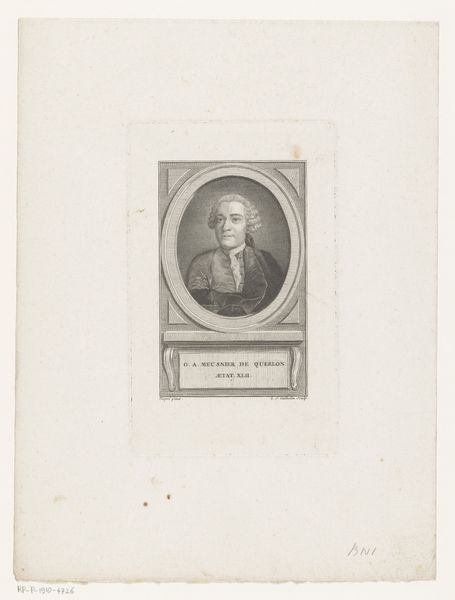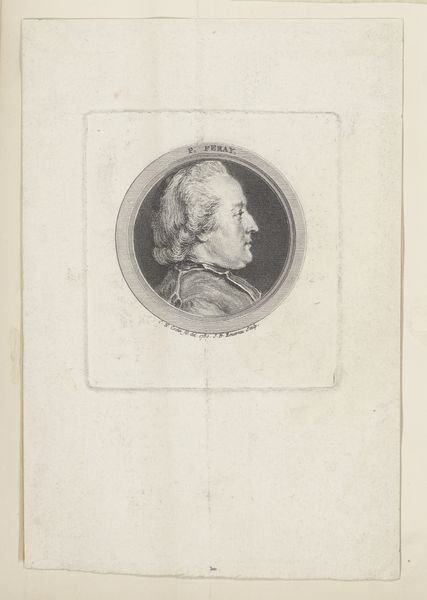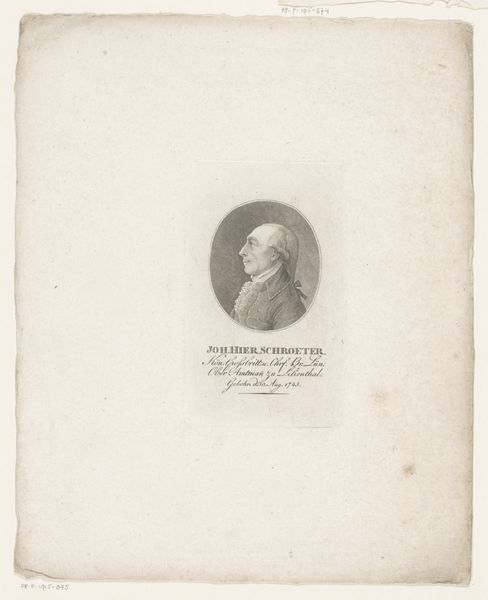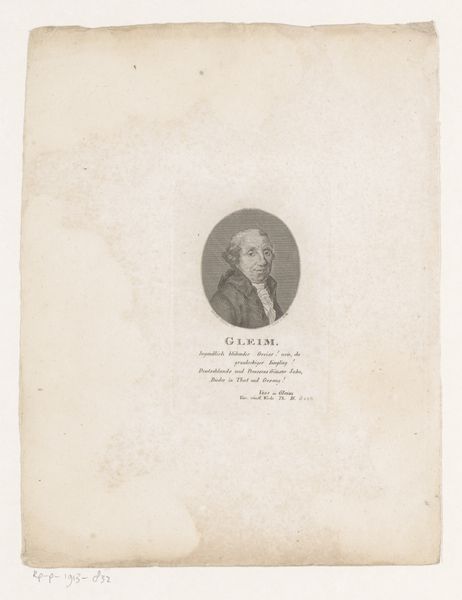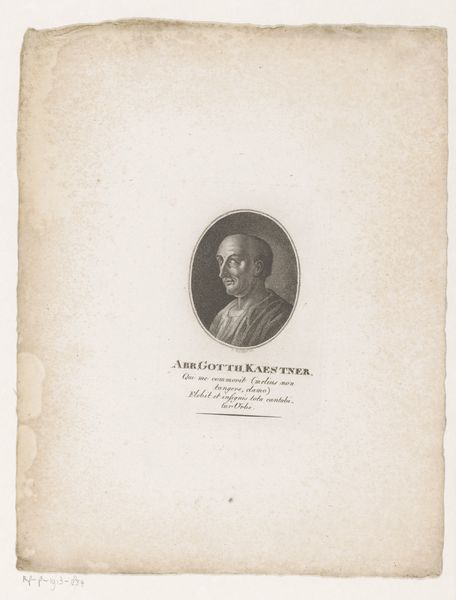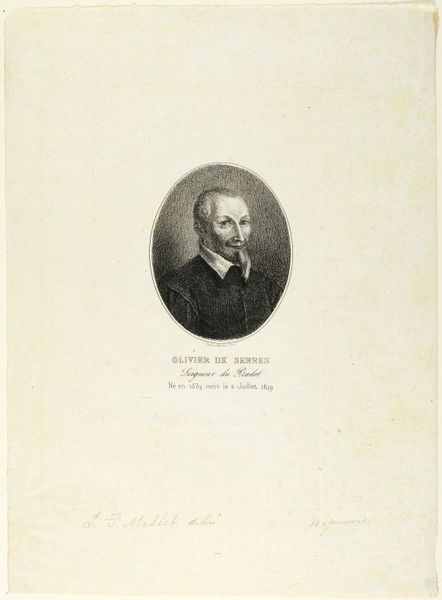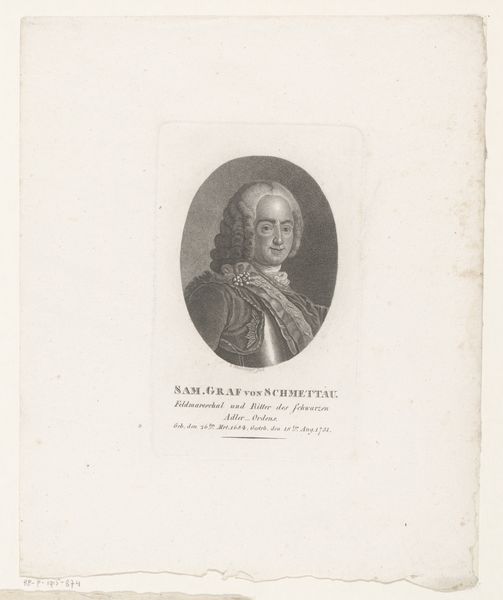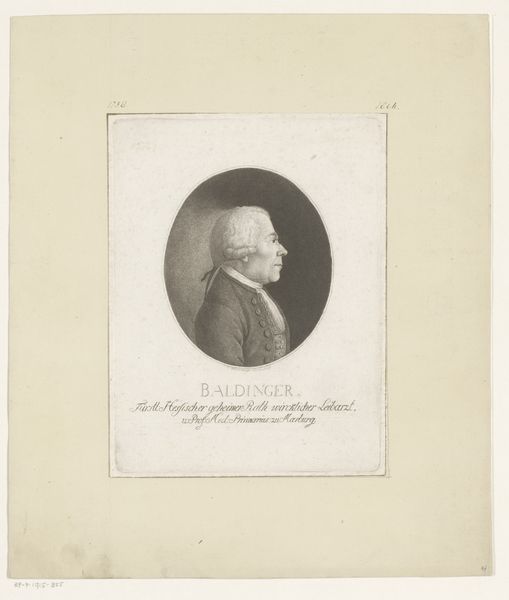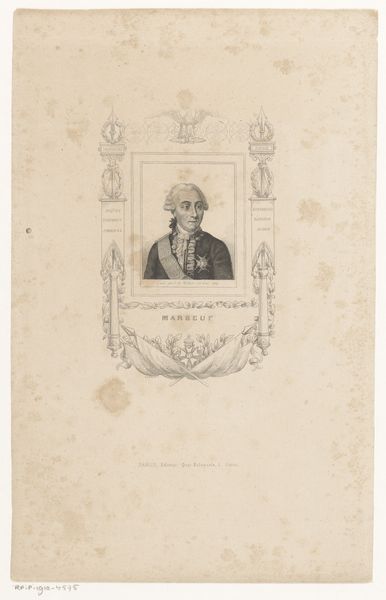
print, engraving
#
portrait
#
neoclacissism
# print
#
history-painting
#
engraving
Dimensions: height 147 mm, width 95 mm
Copyright: Rijks Museum: Open Domain
Editor: So, this is "Portrait of Adrian von Riedl," dating roughly between 1809 and 1878, by Carl August Schwerdgeburth. It's an engraving, a print. It’s striking how formal and almost…official it feels. What jumps out at you? Curator: Well, given its historical context, the engraving serves as more than just a depiction of an individual; it operates as a carefully constructed image designed to project authority and reinforce social hierarchies. Who do you think this was for? Editor: I guess, other people of similar standing or maybe for the general public to have an image of important figures? Curator: Exactly. Consider the neoclassical style, the oval frame. These weren’t arbitrary choices. Neoclassicism, in the wake of the French Revolution, became associated with order, reason, and stability. The print served to circulate a certain idea of leadership. Does this change how you see the piece? Editor: It does. It’s less about the man himself, Adrian von Riedl, and more about what he represents. An ideal perhaps? Curator: Precisely. And how this ideal was actively promoted through printmaking and circulated in society. Engravings like this made images accessible. It’s a form of visual propaganda, however benign it might appear today. The meticulous detail conveys skill, and therefore authority, but also replicability - a political statement? Editor: So the medium itself plays a crucial role. Curator: Absolutely. It's a reflection of the sociopolitical values that artists were expected to uphold. Consider its reception – not just as an artwork but as a vehicle for solidifying power structures. What does that awareness add to your interpretation? Editor: It encourages a deeper reading beyond the surface. I definitely learned a lot today! Curator: Likewise! Analyzing artwork like this, as social objects, reveals fascinating dynamics within art history.
Comments
No comments
Be the first to comment and join the conversation on the ultimate creative platform.

